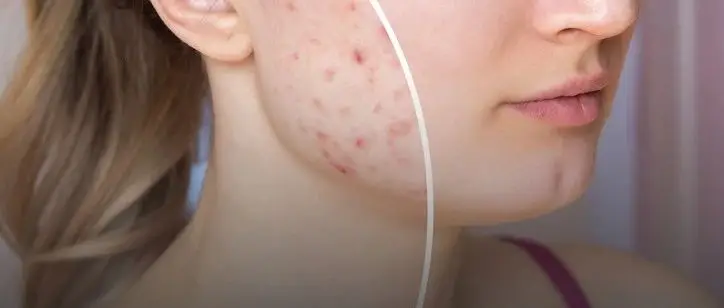What many people don’t realize is that although it’s our head that hurts, the root cause may not necessarily be the head, but it could be our cervical spine sending out an alarm.
This type of head pain referred from the cervical spine is called cervicogenic headache, and it often has the following characteristics:
White-collar incidence rate is twice that of manual laborers (Keyboard warriors are at high risk!)
Bowing head 60° equals 27kg of cervical spine load (Equivalent to six large watermelons on the head!)
3-second self-test:
Is your headache caused by cervical issues?
● Pain may be limited to the nape of the neck, but it may also radiate from the occipital region to the forehead;
● Neck movement or the head being in an inappropriate position for a long time can exacerbate headache symptoms;
● Pain is usually non-pulsating, non-lacerating, moderate to severe, and the duration is indefinite;
● There may be limited neck movement, and there may be pain in the same side of the neck, shoulder, or arm.
The cause is the crossover of the upper cervical spine and trigeminal nerve sensory conduction pathways, which allows pain signals to be bidirectionally conducted between the cervical and trigeminal nerve sensory reception areas of the head and face.
Of course, some headache symptoms are similar to cervicogenic headache and need to be distinguished, such as:
Photophobia and phonophobia + pulsating headache;
Tension-type headache:
Usually bilateral, pain may be “band-like” or pulsating.
For cervicogenic headache, today we will help everyone adjust and improve from 3 directions.
Quick Self-Rescue Guide One: Massage Relaxation Edition
The junction of the back of the neck and the shoulder, which is an area covering the top of the shoulder like a “shawl”.
● Roll up and down for 60 seconds, fully feeling the soreness during the massage;
● Do 3 sets on each side.
Two finger widths above the hairline at the back of the head, in the concave area.
● Nod your head while exhaling(Imagine drawing a checkmark with your chin);
● Hold for 30 seconds, repeat 5 times.
The “rope” that protrudes on the side of the neck when turning the head to the opposite side.
● Hold for 10 seconds × 3 sets.
Quick Self-Rescue Guide Two: Stretching and Loosening Edition
Pectoralis Major Stretch Illustration
● Take a bow step forward and lean your body forward gradually;
● Feel the stretching sensation in the chest(Hold for 30 seconds)
.
● Use the back of the chair to press against the area near the shoulder blades, and lean back like a seal balancing a ball;
● Do 10 repetitions per set, and complete 3 sets.
● If you feel restricted and tense when turning your head to the right, keep your right hand stable underneath, and with your left hand on top, pull the tie and turn your head to the right following the direction of your eyes(Like wringing a towel);
● Repeat the rotation in the limited direction 10 times, and do 3-4 sets.
Quick Self-Rescue Guide Three: Muscle Strengthening Edition
● Keep your lips slightly closed, and the tip of your tongue lightly touches the palate(To maintain a neutral cervical spine position)
.
● Synchronize with a slow nodding action, the amplitude is like a chick pecking at rice(Feeling of the back of the head sliding down a wall);
● Do 3 sets in the morning, afternoon, and evening, with 8-10 repetitions per set.
● Compensate with the sternocleidomastoid muscle.
● Slight tension in the throat.
When to Call for Help?
● Severe dizziness when turning the cervical spine;
● No improvement after 2 weeks of self-treatment;
● Pain affecting sleep for more than 3 days.
References

